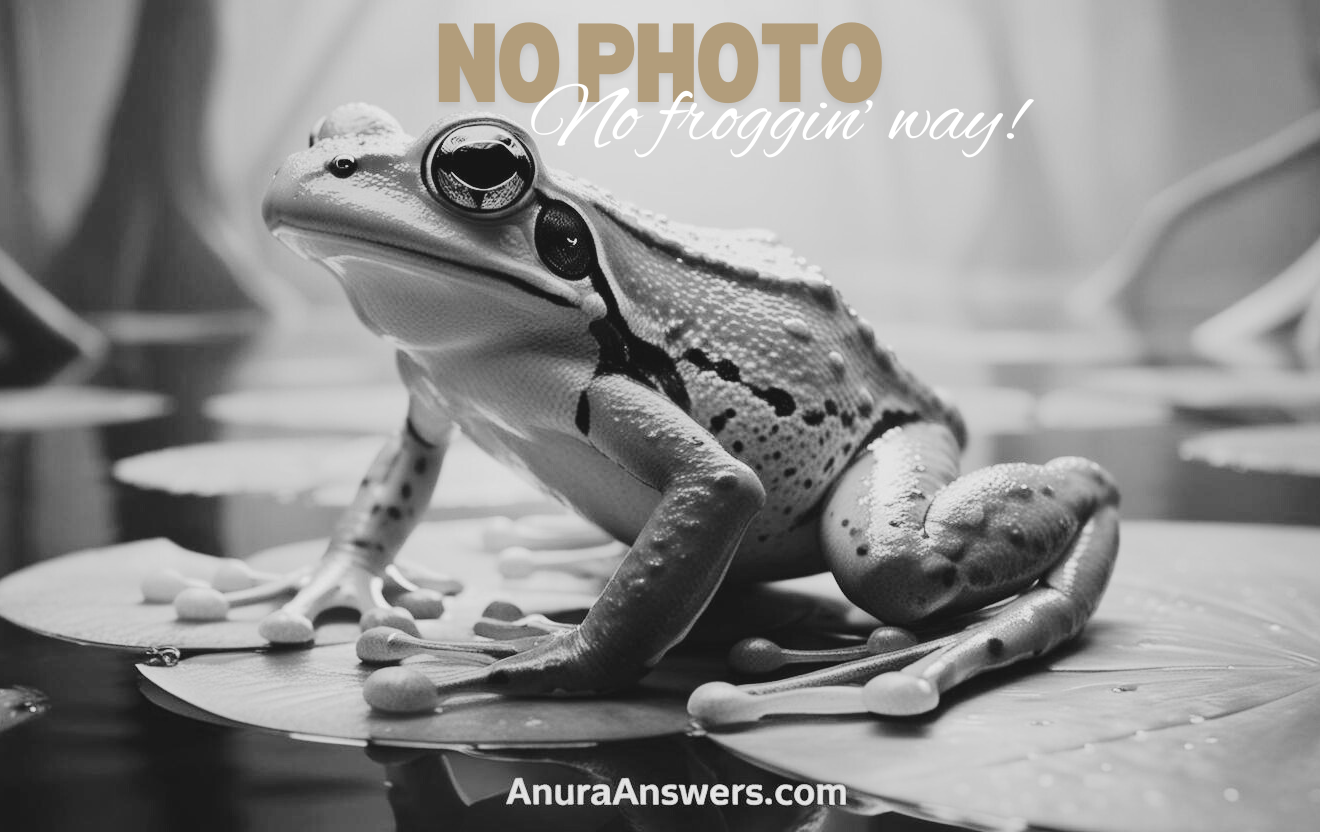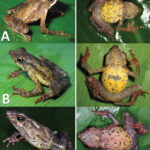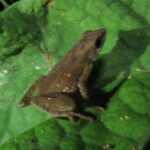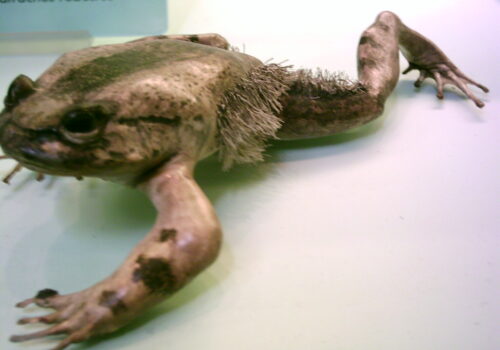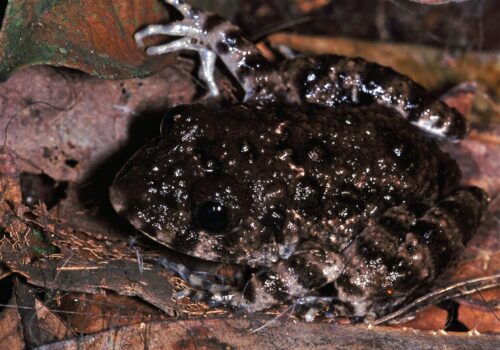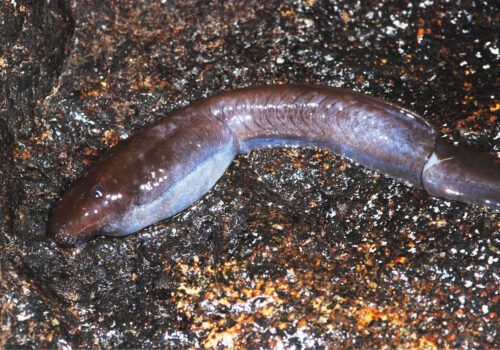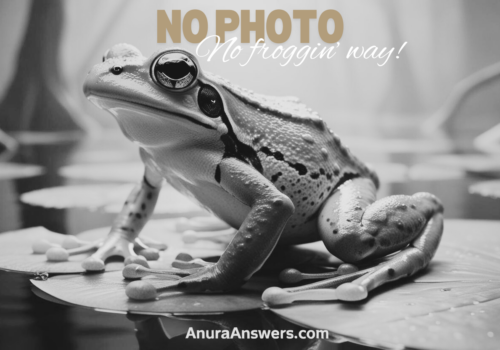Leptopelis jordani: Unveiling the Hidden Life of Jordan’s Forest Tree Frog#
Deep within the lush, mist-draped forests of West Africa hides a creature of subtle beauty and intriguing complexity—the vividly elusive Jordan’s forest tree frog, scientifically known as Leptopelis jordani. A master of arboreal camouflage, this secretive amphibian spends its days nestled amid leafy green canopies and branch-laden shadows, emerging only under the velvety embrace of nightfall. Although relatively unknown to the outside world, Leptopelis jordani plays a fascinating role in the vibrant ecosystem where it thrives, acting as both predator and prey, embodying the delicate balance of nature.
While frogs often captivate us for their bright colors, poison glands, or quirky mating calls, Jordan’s forest tree frog stands out for its ability to seamlessly blend into its verdant surroundings, fascinating researchers and wildlife enthusiasts alike. Whether perched motionless upon dew-glistened leaves or leaping effortlessly from branch to branch, this elusive species provides a unique lens through which we can deepen our appreciation for forest biodiversity and conservation.
Taxonomy and Classification#
Belonging to the class Amphibia, order Anura, family Arthroleptidae, and genus Leptopelis, Jordan’s forest tree frog (Leptopelis jordani) exemplifies a remarkable lineage of African amphibians adapted for life high off the ground. Within this diverse genus, which encompasses more than fifty species of tree frogs distributed widely across sub-Saharan Africa, Leptopelis jordani emerges as particularly intriguing due to its specific habitat preferences and unique physiology.
Closely related to other members of the genus, like Leptopelis viridis and Leptopelis aubryi, Jordan’s forest tree frog displays characteristics typical of its group, yet exhibits nuanced adaptations tailored to its particular eco-niche. Named in honor of renowned zoologist Dr. Karl Jordan, the species has sparked insights into evolutionary processes and environmental adaptation for herpetologists studying the rich biodiversity of African frogs.
Natural Habitat#
Geographic Range and Environment#
Primarily found within the central and western regions of Africa, Leptopelis jordani inhabits the dense, moist forests of Sierra Leone, Ghana, Ivory Coast, Guinea, and Liberia. These tropical habitats are characterized by rich understory vegetation, extensive canopy cover, and a steady humidity maintained by regular rainfall patterns—a perfect sanctuary for an amphibian deeply reliant on moisture for its survival.
This frog displays remarkable arboreal adaptations, preferring elevated perches on sturdy leaves or moss-covered branches situated near slow-moving streams and modest forest ponds. The heart of these forests—thick with tangled vines, majestic trees, and vibrant greenery—forms the ideal realm for this delicate amphibian. Here, in this sun-dappled universe that rarely sees direct sunlight, the frog skillfully navigates its surroundings, fully exploiting the vertical dimension of its forest environment.
Importance of Microhabitat Selection#
The ability to select appropriate microhabitats is crucial for Leptopelis jordani’s survival, particularly considering its sensitive skin that easily loses moisture. Its preferred territories frequently include areas covered by bromeliads, epiphytes, and shallow leafy ponds, all of which are integral to maintaining optimal humidity and temperature conditions for amphibian health. The presence (or absence) of these microhabitats directly influences the frog’s distribution and the survival rate of its delicate eggs and aquatic tadpoles.
Physical Characteristics#
Leptopelis jordani is a truly delicate and enchanting creature, with most adults reaching a modest size between 45 and 55 millimeters in length. While small, they boast striking adaptations essential to their arboreal lifestyle. A distinctive glossy appearance, owed to the secretions maintaining skin hydration, coats their lithe bodies, providing protection against dehydration and pathogens.
Coloration in Leptopelis jordani ranges elegantly from rich shades of green to occasional olive, punctuated with faint, irregular spotting patterns that enhance its disguise among leaves. However, their color patterns are not static; these frogs exhibit a remarkable ability known as physiological color change, subtly shifting shades according to lighting, temperature, humidity, and environmental stressors—adding an extra layer of cryptic protection from predators.
Perhaps most notable are the frog’s enlarged toe-pads, specialized structures that facilitate exceptional climbing capabilities. These pads, covered with microscopic adhesive surfaces, allow the animals to deftly ascend smooth plant stems and intricate tree bark textures—a vital adaptation that enables them to exploit vertical niches inaccessible to ground-dwelling competitors.
Behavior and Life Cycle#
Nocturnal Activity and Feeding Habits#
Like most tree frog species, Leptopelis jordani is strictly nocturnal, remaining dormant during daylight hours, hidden from view amid dense foliage. Once dusk envelops the forest in layers of cool mist, these frogs spring to life, venturing atop leaf canopies to seek food. Their diet primarily comprises various insects and arthropods, such as moths, flies, beetles, and other small invertebrates that frequent the forest canopy at night. Demonstrating swift agility, they employ lightning-fast tongues to capture prey in the darkness while evading predators themselves.
Mating Rituals and Vocalizations#
During rainy seasons, the forests echo with the resonant yet melodious calls of male Leptopelis jordani, as they seek the attention of receptive females. Taking advantage of strategically chosen perches near ponds or temporary pools, male frogs showcase their presence through distinct vocalizations. These rhythmic calls—marked by repetitive notes emitted at carefully timed intervals—form a scintillating chorus that attracts females and simultaneously warns off rival males patrolling their own chosen territories.
Egg-Laying and Tadpole Development#
Upon successful mating, female Jordan’s forest tree frogs deposit their clutch predominantly on leaves overhanging shallow pools or slow-moving streams. Once embryos are adequately developed, tadpoles emerge and drop into the water below, initiating their aquatic developmental stage. Over several subsequent weeks, these tadpoles feed on algae and organic debris, developing lungs, limbs, and other necessary amphibian essentials. Eventually, they undergo metamorphosis, transitioning from water-bound juveniles into agile climbers capable of navigating the arboreal labyrinth in which their parents dwell.
Ecological Role#
Leptopelis jordani serves a vital ecological role in the intricately balanced ecosystem of West African rainforests. As a predator of nocturnal insects, it assists in regulating their populations, keeping herbivorous insects in check and thus indirectly contributing to the maintenance of plant diversity. Simultaneously, the species acts as prey for various predators, including snakes, nocturnal birds, and small mammals, thereby fulfilling an integrated role in the rainforest’s complex food web.
Additionally, because amphibians possess thin, permeable skin sensitive to environmental changes, they serve as effective bio-indicators of ecosystem health. Monitoring populations of Leptopelis jordani can offer early warnings about negative impacts of pollution, habitat fragmentation, and climate change, highlighting the importance of preserving suitable habitats for wildlife conservation missions.
Threats and Conservation Status#
Currently listed as “Least Concern” on the IUCN Red List, the Jordan’s forest tree frog nonetheless faces considerable future risk if habitat destruction and deforestation patterns remain unchecked. Timber extraction, agricultural expansion, and urban development significantly threaten forest habitats across the frog’s distribution, fragmenting essential breeding grounds and isolating populations.
Moreover, factors such as climate change, disease outbreaks—including chytridiomycosis—and increased pollutants infiltrating freshwater ecosystems present additional potential threats requiring constant vigilance and targeted research.
Cultural and Scientific Significance#
While not widely acknowledged in mainstream culture, amphibians like Leptopelis jordani often hold deep symbolic meaning for indigenous peoples in forested regions, signifying purity of water sources and healthy environmental practices. Scientifically, studying this elusive frog fosters valuable insights into habitat specialization, amphibian physiology, and ecosystem interdependencies contributing to comprehensive biodiversity conservation science.
Conclusion#
With their captivating beauty and hidden arboreal lifestyle, Jordan’s forest tree frogs serve as mysterious ambassadors unveiling the narrative richness of African biodiversity. Ensuring their continued existence requires proactive forest conservation and protection efforts. Embracing a world that treasures complexity and harmony rather than exploitation, we preserve hidden gems like Leptopelis jordani, safeguarding earth’s precious biodiversity for generations who, like us, will cherish nature’s secret treasures.
